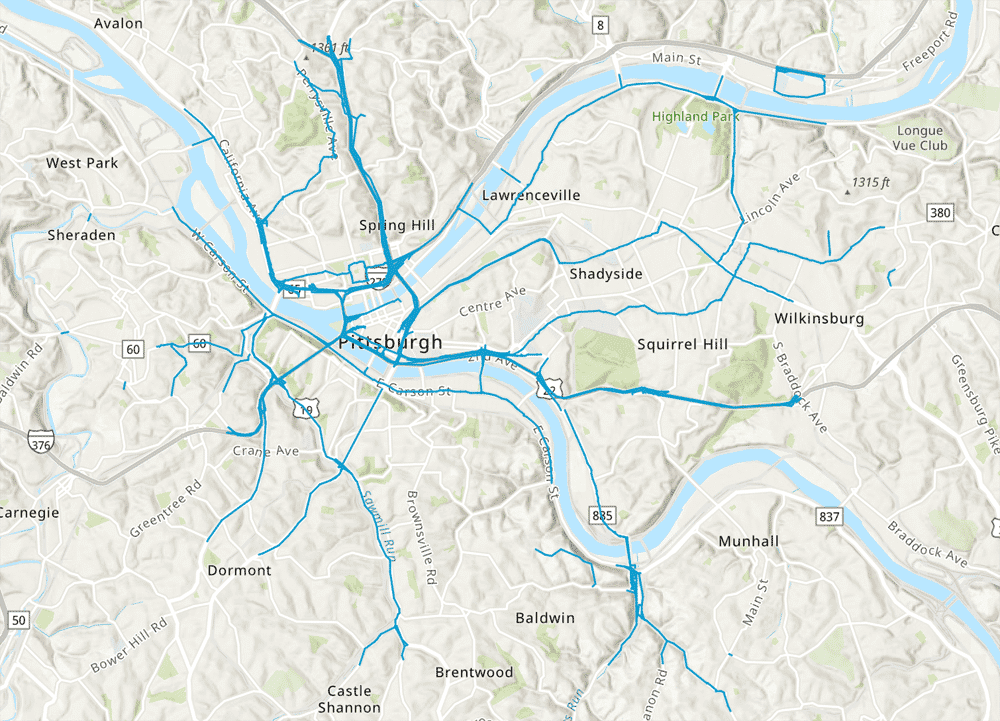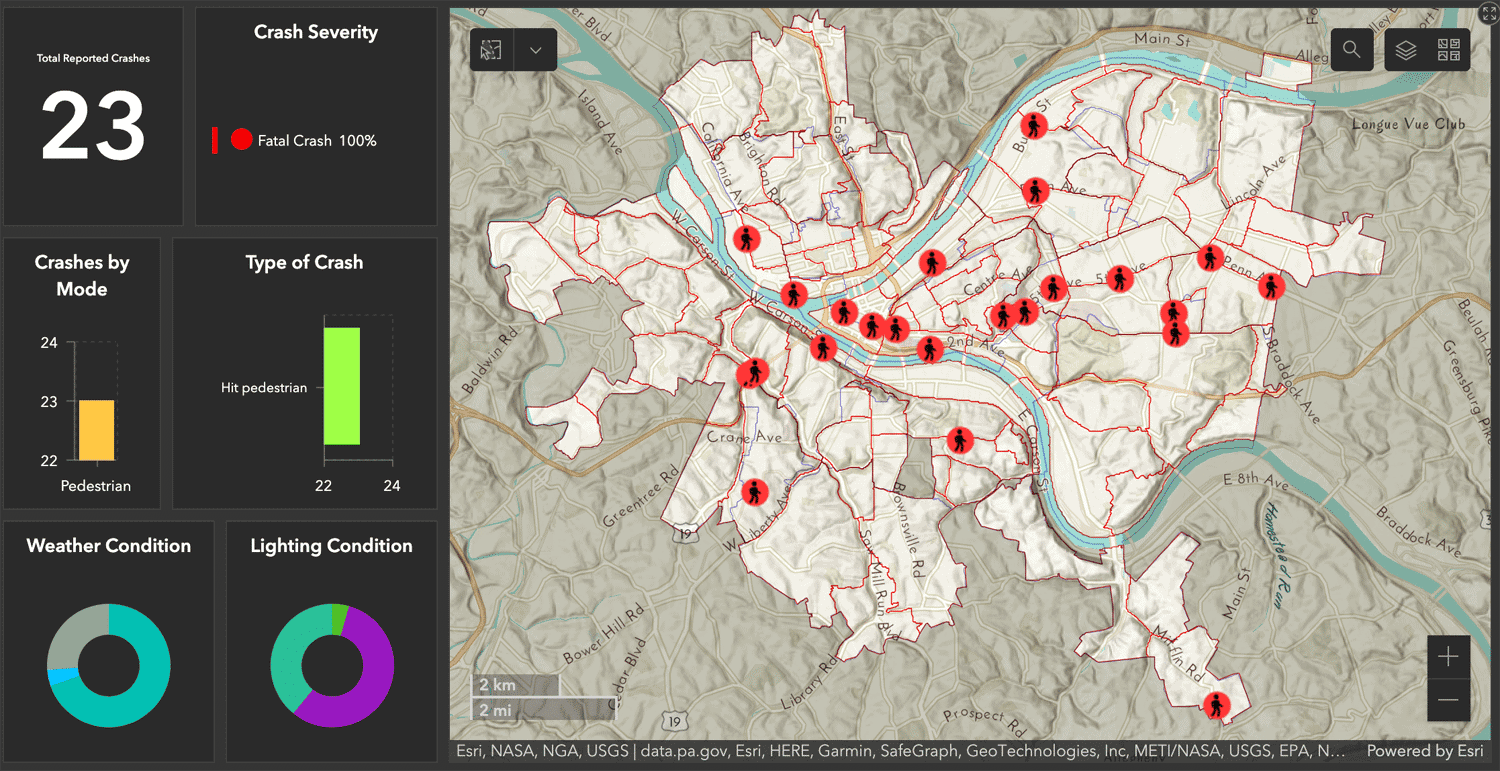
Nobody should die getting where they need to go
Two recent pedestrian fatalities, the first an unnamed man at the Birmingham Bridge followed a few days later by Zachary Gleason on West Carson St, have highlighted the danger that state-owned roads within Pittsburgh’s borders pose for people who walk.
Pennsylvania owns several roads within the City of Pittsburgh, maintained by the state agency, PennDOT. Some of these state-owned roads are obviously highways, and may not allow pedestrians at all or may only allow them along certain parts. However, there are some roads that are often indistinguishable from local roads and are also owned by PennDOT, such as sections of Wilkins Ave or Bennett St. Additionally, roads such as Penn Ave may go between local and state ownership depending on how a given section serves the state route system.

Depending on the context, the City of Pittsburgh may have influence over the street markings even on PennDOT roads, with some limitations. For instance, until Parking Protected Bike Lanes are legal on state-owned roads, the City will be limited to installing this type of infrastructure only on their own locally-owned roads. Additionally, PennDOT may refuse alterations to one of their streets if they deem that a design will decrease the “level of service,” or flow of motor vehicles, according to their models and preferences.
PennDOT, to their credit, has made some serious investments over the past decade to improve walking and/or biking on their own roads as well. For example, they completely redesigned East Carson St in the South Side with the goal of improving the experience and safety of pedestrians on one of the most dangerous streets in the city for walkers.
With that said, PennDOT owns a number of streets within Pittsburgh that are still unsafe due to either decisions made decades ago, or which were designed recently with only motor vehicles in mind, such as Forbes Ave at the Birmingham Bridge and West Carson St, respectively.
Thanks to the City of Pittsburgh’s new crash map, the public now has easier access to data that paints just how dangerous it is to be a pedestrian on a state-owned road in the City.

In the 5 years between 2017 and 2021, 23 pedestrians lost their lives within the City of Pittsburgh, accounting for roughly a quarter of total roadway fatalities.
Of those 23 deaths, 8, or 34%, occurred on PennDOT-owned roads, despite the state owning a small fraction of roads within the city that pedestrians can even walk along. While most pedestrian crashes occurred on local roads, the most severe crashes were on the state-maintained, higher speed roads according to DOMI’s Pedestrian Safety Action Plan
As for bicycling, you’ll find even grimmer numbers for state-owned roads. Since 2002, there have been 21 bicyclists killed across Allegheny County. Of those, 14 of the bicycle fatalities, or 67%, occurred on state-owned roads.
Pennsylvania, like other states in the US, have seen an uptick of pedestrian fatalities, despite a drop in fatalities for those inside of a car. Statewide, the combined rate of pedestrian and bicycle fatalities were greater than 15% of the total on state roads. There are many steps that PennDOT can take to address this disparity, as outlined in their 2019 Active Transportation Plan, but they’ve been slow to bring these policies and practices into action. Additionally, the 2022 Strategic Highway Safety Plan, which BikePGH helped shape, serves as a blueprint to reduce fatalities and serious injuries on Pennsylvania roadways.
PennDOT has generations of auto-oriented design to retrofit and improve for people who get around outside of cars, which in a city like Pittsburgh, is a significant amount of the population as nearly 25% of households don’t own a car; meaning we have one of the highest rates of walking commuters in the nation.
After Governor Shapiro’s win in November’s election, BikePGH, Bicycle Coalition of Greater Philadelphia and 26 other advocacy organizations submitted a Sustainable Mobility Platform of recommendations for the administration and new PennDOT Director.
Our main asks included:
- Prioritizing sustainable mobility policies within PennDOT
- Aligning funding priorities with Sustainable Mobility
- Investing in Safe Routes to School
- Accelerating Active Transportation Infrastructure Development
- Requesting the Sharpiro administration to champion our legislative priorities
We are looking forward to working with the new Shapiro administration to improve the safety of PennDOT roads for those who are not driving a motor vehicle. We owe it to those who didn’t make it.
1 Comment
Great article. Thanks for the great information.